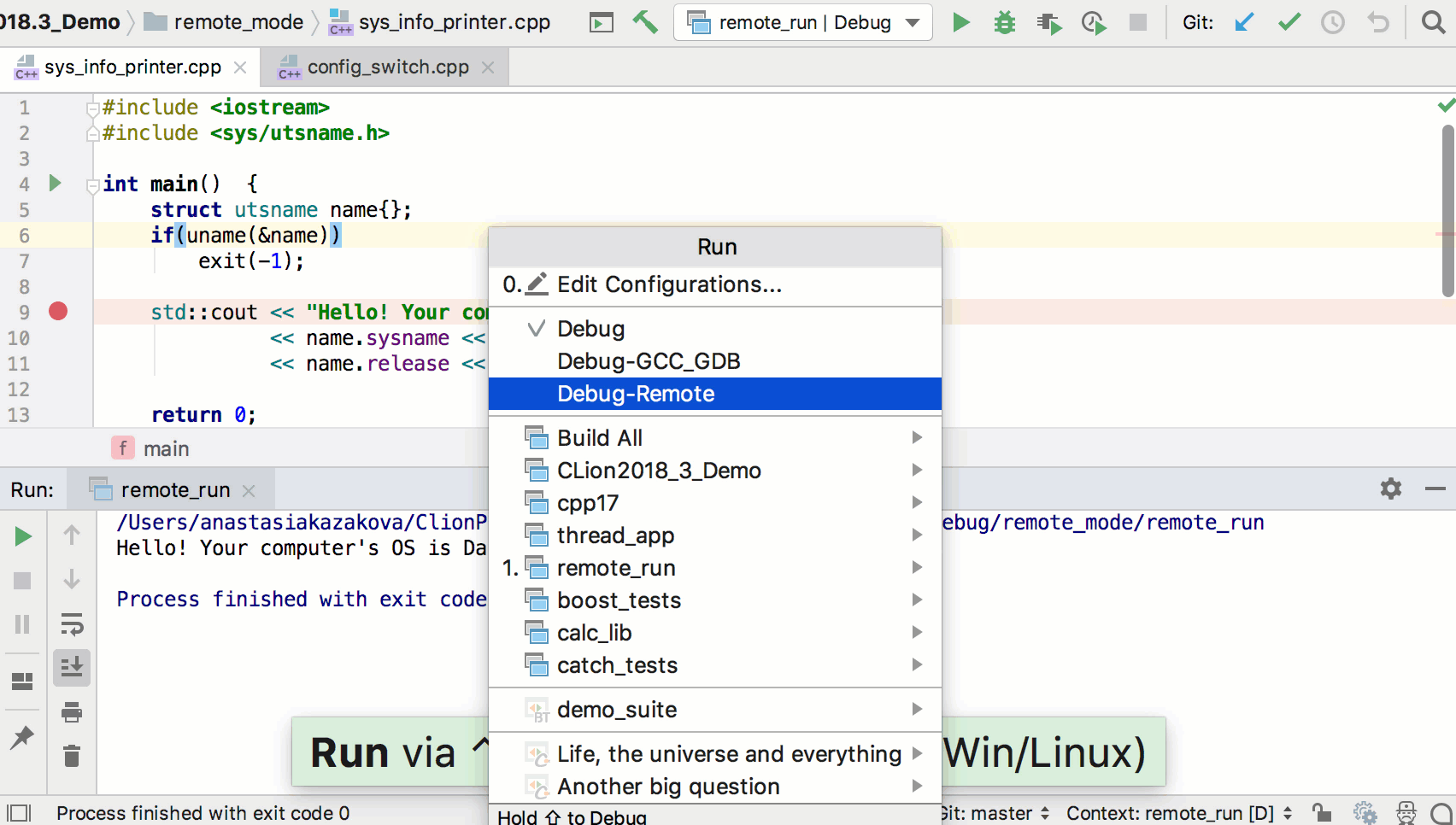

It will automatically download the exact version of the client that will work with the IDE backend. It allows you to configure new remote connections as well as manage the existing ones. The JetBrains Gateway makes all JetBrains IDE backends available to a user. To have a single entry point for the variety of your remote backends To avoid doing any kind of local development on your client machine Why would I need to use JetBrains Gateway? All functionality that comes along with the JetBrains Gateway is available in CLion. However, it still downloads JetBrains Client.

Can I connect to the remote server from CLion? After you request an environment in the JetBrains Gateway, it launches JetBrains Client that is specific to that environment. It runs on the local machine, and allows you to create new environments or connect to the existing ones. These addresses provide corresponding versions of the JetBrains Client (thin client) and JBR files.īasically, JetBrains Gateway is a launcher that brings a backend server and local environment together. macOS and Windows are planned, but we can't provide ETA yet.īoth remote server and local computer, or only the local one must have a network connection to JetBrains' URLs from this list: Only Linux servers are supported as suitable for the backend. What are current limitations of the implementation? You can refer to the system requirements section. What are the system requirements for the remote server? You start JetBrains Gateway that connects everything together and gets you a thin client as an output that has an advanced editor, which is based on JetBrains Rider’s RD protocol that makes typing and working in the editor feel instant. You have a client, which is a physical machine used by developers to connect to the server and provide a thin client which will be used for developers work.
#Clion remote code#
You have a server which is a physical or virtual machine to host the source code and run headless CLion or other IDE that will perform most of the IDE features. How does remote with the thin client work? If you'd like to become a vendor or are orchestrating remote development within your organization, contact us for further details. If your local workstation already has an active suitable license, JetBrains Client will pick it.
#Clion remote license#
The license will be asked on the local machine upon connecting to the remote IDE. To use a vendor plugin or the built-in SSH functionality of remote development, you need to have a license to the corresponding IDE, the same way as for the desktop version. What is licensing scheme for remote with the thin client? What are the advantages of remote with the thin client?Ībility to edit, build, or debug applications on a different OS than you are running locally.Ībility to use larger or more powerful hardware than your local machine for development.Ībility to use a laptop as a thin client, no source code needs to be hosted on your local machine.Ībility to work from anywhere, while the sensitive intelligence is hosted on the company’s servers only.

Remote with the thin client is a new functionality in CLion that enables you to connect to a remote server with the IDE backend running there from anywhere in the world, and work on a project located on that server as seamlessly as if it was located on your local machine.


 0 kommentar(er)
0 kommentar(er)
